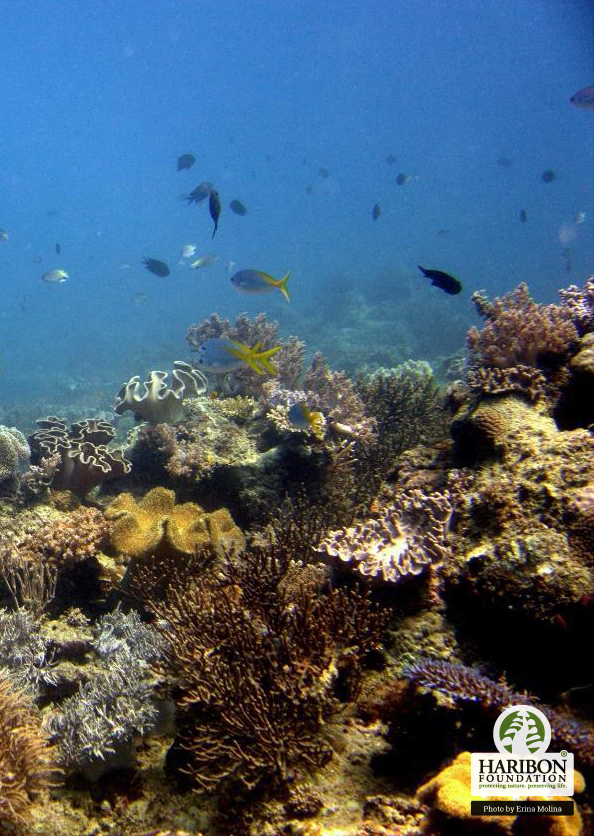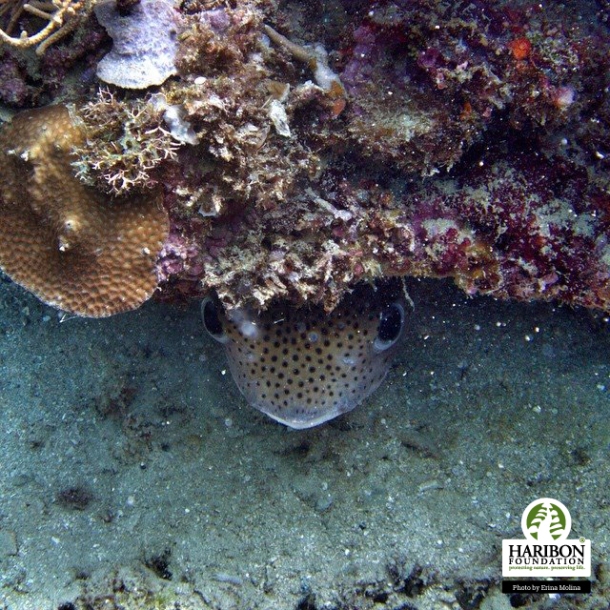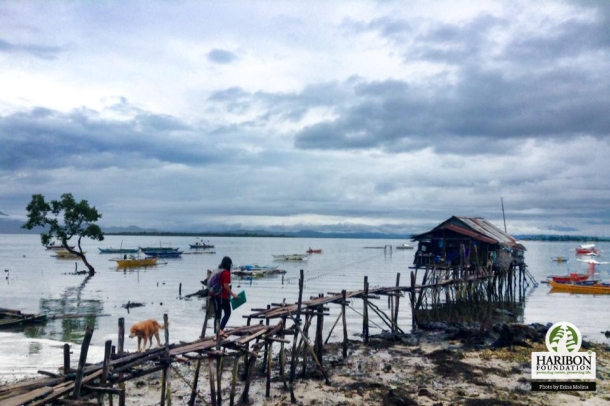
A Palawan coral reef vista during an underwater survey. Photo by Erina Molina.
The Haribon Foundation for the Conservation of Natural Resources, Inc. is concerned about the proposed project by Nickelodeon and Coral World Park Undersea Resorts to build an underwater resort in Coron, Palawan.
This marine attraction will have potential effects on the coastal and marine biodiversity in and around the proposed site. The project may also alter the water movement around the area which may have significant impacts on the behavior of some of the world’s most diverse ecosystems. This project by Nickelodeon and Coral World Park Undersea Resorts will affect how corals settle and build a reef thereby threatening tens of thousands of marine species sheltered by corals. Needless to say, the project will affect corals and other biodiversity which rely heavily on their tactile and aural sensory to navigate and settle on reefs.

A Porcupine fish approximately 1.5 ft long finds shelter in the reef, off the coast of Palawan. Photo by Erina Molina.
These coastal habitats are feeding and nursery grounds for 1,881 coral reef-associated fishes. Also found here is what is called the crypto-biodiversity that live in the nooks and crannies such as crabs, shrimps, worms, colorful nudibranches, other molluscs, sponges, bryzoans that are estimated at about 6,800 species. Let’s not forget the corals. The Philippines has 29 of the 50 Evolutionarily Distinct and Globally Endangered (EDGE) Coral Reef species, including the elegance coral (Catalaphyllia jardinei), considered Vulnerable by Philippine coral scientists and the IUCN Red List of Threatened Species.
What about the marine mega-fauna? Dugongs depend on seagrass for food and nutrition. These species were once found all over the Philippines. Hunting and reclamation of seagrass areas have caused its stark decline. Today, what is left of the dugongs can only be found in Davao, Aurora, Guimaras and around the Calamianes Group of Islands.
The Palawan Council for Sustainable Development (PCSD) conducted an Environmentally Critical Areas Network (ECAN) zoning in 2004, where species and their habitats found in Palawan were assessed. The status of reefs, seagrass beds and mangroves were evaluated including Coron, Culion, Linapacan, El Nido and other areas. The goal of the ECAN zoning is the conservation and protection of the natural wealth and ecosystem services of Palawan.
Philippine reefs have been feeling the pressure. There were bleaching incidents in 1997-98, 2010 and 2016 where the seas were warmer than usual. Other coastal habitats including seagrass beds and mangroves have been reclaimed for “development” projects such as reclamation for ports or resorts and converted to large scale fish ponds.
There needs to be a discussion on what “development” really is. Is building permanent structures, concrete or otherwise, truly eco-tourism? Humanity has been long changing the landscape to suit their needs. There may be a need for a “return of investment” but will construction of a theme park solve Palawan’s, or the Philippines’, economic challenges? Or will it increase humanity’s dependence on artificial distractions under the banner of eco-tourism? This term should not be thrown around lightly; lest we risk it becoming another “dirty” word for the sake of development.

A Haribon biologist interviews a fisher in Palawan. More than 2,600 fishers were interviewed in the Philippines to answer the question, “are there really more fish in the sea?” 59 species were reported by fishers to have decreased in catch, or disappeared entirely. Photo by Erina Molina.
The Haribon Foundation is aligned with the stances made by Save Philippine Seas, Department of the Environmental and Natural Resources secretary Gina Lopez, and other fellow environmental organizations within and outside the Philippines. We urge the public to sign the petition launched by Anna Oposa on bataris.org.ph, and to continue being vigilant and watchful over our natural, living, ecosystems from ridge to reef.
For media interviews, contact:
Kitty Amante
Communication and Information Officer
+63922-8151940
Media Spokesperson:
Ditto dela Rosa
OIC, Conservation Science and Research Department
+63922-8152052

Gregorio “Ditto” E. dela Rosa Jr. is the Officer-in-Charge of the Conservation Science and Research Department of the Haribon Foundation. Since 2006, he has assisted local governments, community organizations and partner non-government organizations to carry out terrestrial and marine conservation plans in several Key Biodiversity Areas in the Philippines. He has conducted over 1,200 dives at Haribon, including underwater surveys in Palawan, Surigao del Sur, Antique. He has also been part of the team that reviewed the effects of earthquakes on coral reefs in Northern Bohol with the Zoological Society of London Philippines.
Pingback: SOS! A plea to Save Our Seas | People Asia
Information dissemination is really important caring our nature.
LikeLike